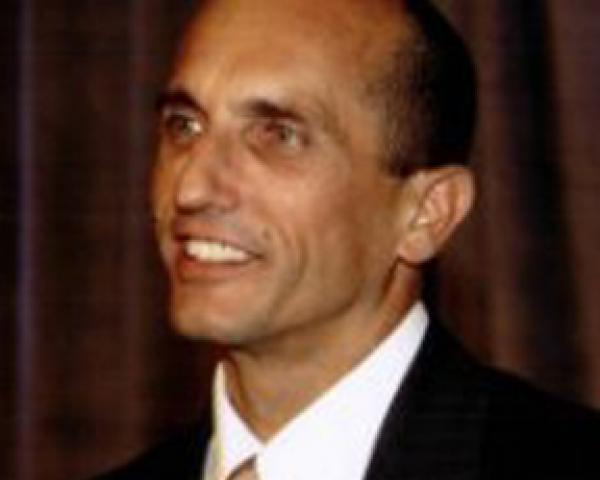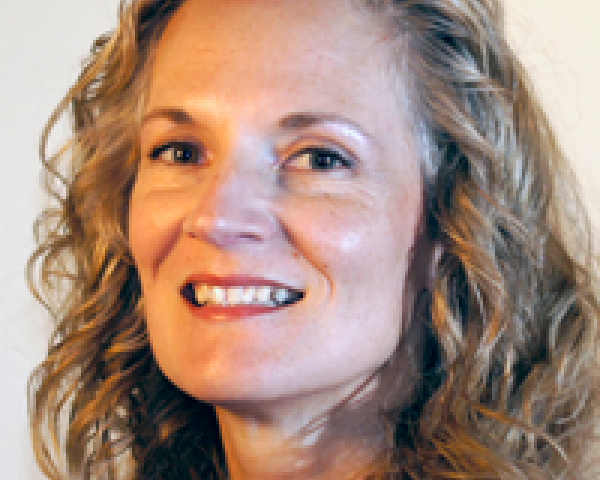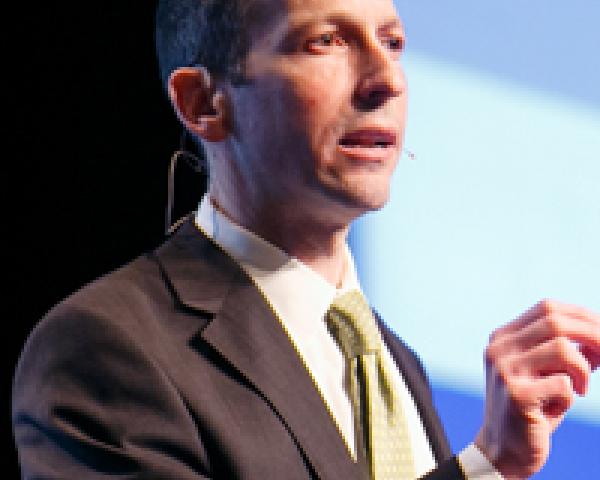Outside accountants – including auditors, those providing other attestation and compilation services, tax preparers and even mere advisers – are increasingly facing allegations that they served their clients in a fiduciary capacity. These are not simply idle observations: In general, they are made by clients and third parties seeking to obtain monetary damages from the accountants as a result of,
inter alia, errors in financial reporting, tax positions that are subsequently rejected by the IRS or other authorities and losses incurred by clients or third parties following advice presented by the accountants. The reason adverse parties seek to impute fiduciary obligations to the accountants is that this offers them the opportunity to seek larger settlements or court-imposed awards, if the defending accountants are found liable. Fiduciary duties pose major risk for accountants and for those writing insurance coverage for them.
Traditionally, accountants were not considered to be fiduciaries, and in some instances still cannot be held to be such, either because of the nature of the services being rendered or the character of the client organization. However, over time the threshold for finding (or, at least, being permitted to argue in litigation) that the accountants were
de facto fiduciaries has been lowered by court rulings. The implications for the accountants are serious – and they warrant taking steps to mitigate, by use of appropriate engagement letter language, and by exercising greater caution in taking on clients and in performing services for them. Those underwriting accountants’ malpractice insurance should be equally concerned with how well, if at all, their insureds have dealt with this risk factor.
What makes a party a fiduciary?
Fiduciary status is not well defined under the law, and this lack of precision has led, over time, to a creeping extension that now sometimes even reaches to outside accountants. A fiduciary relationship gives rise to fiduciary duties, the primary one of which is that of loyalty. As expressed more expansively in a number of key court decisions, “[a] fiduciary relationship carries with it the duty of candor, rectitude, care, loyalty and good faith.”
[1]
Fiduciaries are required to hold their
beneficiaries’ (i.e., clients) interests uppermost. Generally, fiduciary relationships are characterized as involving two parties, with the one (the
fiduciary) acting on behalf of another (the
beneficiary). The acting party exerts
control over a critical resource that
belongs to the other party – for example, the fiduciary invests funds belonging to the beneficiary, or controls the official filings (e.g., financial reports or tax returns) that are the obligation of the other party. The other party must have a relevant
vulnerability (lack of investing expertise, technical knowledge, etc.) that places the beneficiary in what amounts to a subservient position vis-à-vis the fiduciary regarding the object of that relationship.
A fiduciary duty arises by either of two means: by operation of law or by application of legal factors. The first of these connotes a formal relationship between the parties, whereas the latter arises from informal relationships. Furthermore, in matters that have been elevated to the domain of litigation, there have been various
ad hoc determinations that fiduciary obligations have attached, beyond those set forth in established law.
Examples of formal relationships to which fiduciary obligations will be ascribed include trusts, guardianships, agency arrangements, partnerships and joint ventures, corporations (regarding the duties of directors and officers) and counseling relationships (this being the most controversial). Counseling relationships may be those of attorneys and accountants and their respective clients, medical doctors and psychiatrists and their respective patients and even clergy and their parishioners. More generally, counseling relationships may include any others where the giving of advice in confidential settings is a central defining condition.
Informal relationships may also be interpreted as requiring the duty of loyalty. To rise to this status, there must be “trust” or “confidence” reposed by one person (or entity) in another,
and there must be a resulting “domination,” “superiority” or “undue influence” of or over the other party (the putative beneficiary of the fiduciary relationship). It is important to stress that neither trust nor vulnerability alone suffice – it is widely held that both must be present to successfully assert that such an informal relationship creates fiduciary obligations.
More generally, if any person solicits another to trust her in matters in which she represents herself to be expert as well as trustworthy,
and the other party is not expert and accepts the offer and reposes complete trust in that person, a fiduciary relation is likely established.
However, sharing expertise with another party is not,
per se, enough: It is clear that not every expert is or can be held to be a fiduciary.
[2] There is a wide range of informal relationships, not all of which will connote fiduciary obligations. As the
Restatement of Trusts notes, “Although the relationship between two persons is not a fiduciary relationship, it may nevertheless be a confidential relationship. Conversely, a fiduciary relationship may exist even though the parties do not enjoy a confidential relationship.” Thus, this is a grey area in the law, and this very ambiguity is what creates risk for the unwary.
For example, a financial reporting expert may advise a client on the various ways a particular transaction or event might be reported, or even opine that only a single approach would meet professional standards, but the ultimate decision remains that of the client, who may reject such advice or seek other opinions. The accountant does not dictate how the transaction or event has to be reported in the client’s financial report (although, if serving as independent auditor, the accountant may elect to render a less-than-unqualified opinion if the client elects an improper method of accounting having material impact on those financial statements).
As already noted, determinations establishing fiduciary obligations have been sometimes made on an
ad hoc basis by the courts. Of greatest relevance to the present discussion, this tendency has increasingly brought accountants under the fiduciary duty umbrella, sometimes to the accountants’ great surprise and dismay. Most commonly, in the author’s experience as a practicing accountant, this has involved tax preparers who may rather casually offer investing advice to their clients. For example, upon noting a particular client’s high tax bracket, some tax preparers will make offhand comments about the virtues of, say, municipal bonds or real estate as investment options, or wax enthusiastic about a specific bond issue or mutual fund, which is more of a concern. More recently, this logic – applying fiduciary obligations to accountants offering investment counseling – has been extended to those offering a range of non-tax services, even if tradition and professional standards clearly prohibit the accountants performing those services from also serving in a fiduciary role.
What are the duties of a fiduciary?
Being defined as a fiduciary (whether or not a formal fiduciary relationship has been documented) brings with it a range of obligations. As noted, the most significant of these is the duty of
loyalty. The interest of the principal (the beneficiary, or the client) must come first – even to the exclusion of the interests of the fiduciary. For example, if our hypothetical tax preparer suggests a certain class of investment to his client, it must be believed that this is an optimal investment strategy for the client, unrelated to the accountant’s own investment interests. Touting an investment in the hopes that, e.g., an increased demand will lift prices and thus benefit the accountant’s own holding of the same asset would clearly be a breach of this obligation.
In addition to making (or seeking to make) a hidden profit from advice given to the beneficiary, competing against the beneficiary (e.g., putting in a bid for property sought by the beneficiary, or “front running” an investment in securities), or simultaneously acting on behalf of another party whose interests are adverse to the beneficiary, would constitute breaches of the loyalty obligation. Because accountants typically have a large number of clients, there is a real risk that this prohibition could inadvertently be contravened.
A fiduciary also has a duty to disclose all relevant facts to its beneficiary. Again harking to the tax preparer/adviser situation, if the accountant is positioned to benefit if the client follows this investment advice (e.g., will obtain a referral fee or commission), this must be clearly communicated to the putative beneficiary. If an accountant is placed in the role of a fiduciary, the duties to exercise reasonable care and to maintain client confidences, found in the professional technical and ethical standards, must still be observed. Additionally, the fiduciary has a duty to maintain client confidences, which might carelessly be disobeyed even in the course of casual conversations with the accountants’ other clients.
Why is being held to be a fiduciary a risk for accountants?
Being held accountable as a fiduciary has one very crucial implication. Whereas assertions of failure to exercise
due care (the normal standard to which outside accountants are held) lie within the domain of tort law, assertions of failure to meet the requirements of
loyalty are found within fiduciary obligations. In the instance of allegations of breach of fiduciary duty, the burden of proof shifts to the respondent accountant, who must show,
inter alia, that all material facts had been provided to the beneficiary and that all other fiduciary obligations have been satisfied.
In the event of a finding of failure to exercise ordinary due care, as defined in the professional standards with which the accountant is obligated to comply, damages are limited, typically, to actual damages suffered by the plaintiff, assuming that the tripartite required demonstrations of liability, reliance and damages have been achieved by the complaining party. In contrast, a failure to meet fiduciary obligations may result in punitive damages as well as the awarding of plaintiff’s legal fees, and thus presents a significantly greater financial risk for the accountants and for their insurers. The burden of proof, coupled with the potentially greater monetary damages, makes defending against well-founded accusations of having been a fiduciary and having breached associated duties to the beneficiary a much more serious concern.
The evolution toward fiduciary obligations for accountants has accelerated over the past few decades. During the 1970s and 1980s, claims against CPAs were commonly based on fraudulent misrepresentation and negligence (i.e., professional malpractice), as well as on contractual breaches (in the case of suits by clients against their accountants, who had purportedly failed to perform the assignment for which they had contracted). The 1990s witnessed an increase in claims made against CPAs that argued that they had served as financial advisers. This led to allegations of breach of fiduciary duty and a range of other assertions, such as functioning as an unlicensed investment adviser.
In the early 2000s, courts readdressed fiduciary duty claims, as they might pertain to CPA liability matters. In a seminal case,
Miller v. Harris, decided in 2013,
[3] a state appellate court reversed and remanded the trial court’s dismissal of a complainant’s breach of fiduciary duty claim against the respondent accountants. It found that contracts (such as that between the accountant and his client) between litigating parties do not control a claim for breach of fiduciary duty, because the latter are not based on contract law. This distinction is a vital one, establishing an important principle. Further, the court stated that a claim for breach of fiduciary duty must allege the existence of a fiduciary relationship and a breach of duties imposed as matter of law as a result of that relationship. The net effect of the
Miller v. Harris appellate decision was to set a new, lower bar for fiduciary status by operation of law (i.e., for an informal relationship).
Given this decision and others, there is an enhanced likelihood that future actions against accountants will attempt to assert as fiduciary those relationships that, in the past, were not deemed to be such. Accountants, and their insurers, thus would be wise to give increased attention to this risk, and take steps to mitigate it, where possible.
What steps should be taken in actual practice to guard against this risk?
Although the record has been mixed, there has been some expansion of fiduciary duties over past decades to include accountants. Traditionally, of course, accountants generally had not been deemed fiduciaries. Indeed, their obligations to third parties and requirement for independence historically confirmed non-fiduciary status on accountants, inasmuch as duties to third parties could not coexist with loyalty to the client entity’s management.
Whereas at one time any attempt to attribute fiduciary status to accountants, for the purpose of alleging breach of fiduciary duty by them, would have been almost automatically dispensed with, today accountant defendants are very unlikely to obtain summary dismissal of breach of fiduciary duty claims. Instead, courts are holding this matter to be a fact issue to be resolved at trial. For the accountants, one important implication is that, even if the defense ultimately prevails, they will be forced to incur costs to defend against such claims. In litigation, even when you win, you often lose.
The existence of a fiduciary relationship is now defined to be a question of fact. If the facts support the assertion that an accountant acted as a fiduciary for the client, that accountant will be exposed to liability for breach of fiduciary duty, which may result in economic harm greater than in the situation of a garden-variety failure to exercise due care in a professional negligence suit, including the possibility of punitive damages and attorney’s fees being levied. The burden of proof is essentially placed on the defending party once the existence of a fiduciary relationship has been established by the complainant. Summary dismissals of fiduciary obligation claims against accountants are now unlikely to be obtained, meaning costs of defense must be borne even when ultimate exoneration is achieved.
Engagement letter limitation of damages language will often not be effective in precluding punitive damages, so this risk element cannot easily be protected against, if a fiduciary relationship can be established by the complaining party.
Contractual language defining the assignment as not implying fiduciary duties may not be sufficient to defend the suit. Nevertheless, having a well-crafted engagement agreement with clients remains an important defensive strategy – and such letters are mandated under professional standards for most ordinary accounting and auditing services. In the author’s opinion, the role of “adviser” should be avoided or severely constrained, if later allegations of breach of a fiduciary relationship-based obligation are to be averted.
[4]
If advice is provided in circumstances in which the client can later plausibly claim to have been in a subservient role – thus, where the accountant was effectively making decisions for the client – there will be risk. Obtaining “informed consent” for recommendations made to the client would be one procedure providing some reduction in such risk. All recommendations should be couched in language that requires the client to consider and then independently conclude upon the matter, by either accepting and acting upon it, or rejecting it.
Finally, for both insureds and insurers, it would be wise to consult with a qualified attorney regarding the language used or proposed for accountants’ engagement letters for the various services being offered. Only in this way will risks, including that of being held accountable for breach of fiduciary duties, be most effectively addressed and, to the extent possible under evolving legal standards, contained.
[1] See, e.g.,
Miller v. Harris, 2013 IL App (2d) 120512, ¶21;
In re the Estate of Abernethy, 2012 Tex. App. LEXIS 4272; and
Gracey v. Eaker, 2002 Fla. LEXIS 2662.
[2] Burdett v. Miller, 957 F. 2
nd 1375, 1381 (7
th Circuit, 1992).
[3] Miller v. Harris, Appellate Court of IL, Second District, 2013
[4] Somewhat ironically, the trade association of public accountants, the AICPA, long promoted the catch-phrase “trusted (business) adviser” as a marketing tactic for CPAs to employ. It no longer does this, but a review of recent on-line articles and firm web sites reveals that this proclamation, or a close variant, continues in wide usage. Knowingly or not, many accountants are playing a dangerous game, wanting to tout their roles as adviser while rejecting status as fiduciaries.




















